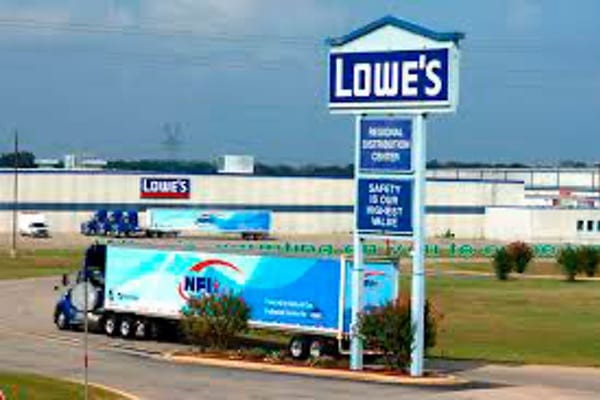Fortune 50 company’s regional distribution center improves efficiencies and reduces tardiness.
Overview
Lowe’s is a Fortune 50 home improvement company that operates more than 1,840 retail stores across North America. Its customers include individual homeowners and renters completing a range of projects, as well as professional customers in the construction, maintenance, repair and operations industries.
Its supply chain network features more than 30 distribution centers (DCs) that transport approximately 75 percent of stock merchandise. Its regional DC campus in Mt. Vernon, Texas includes three buildings, the largest of which is about 1.2 million square feet, houses seven miles of conveyor belts and employs 850 people. The two additional buildings on campus, one of which is 800,000 square feet, are used primarily for training and meetings, and employ far fewer people.
Challenge
The enormous size of the DC made it a challenge for employees to get to their destination on time; it wasn’t uncommon to be working a half-mile away at the time they were supposed to arrive elsewhere. Without clocks that were set to the same, precise time, employees had difficultly gauging when they should leave the floor to travel to other areas, take a break or attend a meeting.
Lowe’s tried to correct the problem by installing atomic clocks, but they didn’t consistently work throughout the building. Although the company doesn’t allow mobile phones on the warehouse floor, some employees carried their phones so that they had a more accurate sense of the time.
Lowe’s knew it needed clocks that pulled the same time as its timeclocks and computers, giving team members the ability to manage themselves more efficiently and be held accountable.
Tom Standridge, senior support analyst, IT field services at Lowe’s, knew of other DCs that had synchronized time, but their systems didn’t seem ideal. “Other facilities have synchronized time, but they have to run lots of DC voltage wires throughout the warehouse,” said Standridge. “And their time system pulls the time from the warehouse computer. I didn’t want that because then we’d have to make sure our computer software matched with what the time system needed. I needed something turnkey.”
Solution
After researching synchronized time technology companies and contacting several of them, Standridge chose American Time. “Responsiveness and cost-effectiveness were the two biggest factors for choosing American Time,” said Standridge. “They listened to what we had to say, did an on-site consultation and gave us guidance on our different options. We must have walked five or six miles during their visit, testing signals to make sure we’d be covered no matter where the clocks were located in the building.”
Lowe’s chose a SiteSync IQ wireless clock system and a transmitter with a 40-watt system controller; 24 digital, double-sided clocks; four digital, single-sided clocks and seven wireless analog clocks. The clocks receive a signal from the server that informs them of the correct time. No special software is required, and the Remote Connect web server allows for quick and easy management of the controller. During daylight saving time changes, the clocks update automatically and there is no need for maintenance staff to make the adjustments.
The clocks were installed on the travel aisles throughout the main building, along with the breakrooms, cafeteria and meetings rooms. In the other two campus buildings “one that is located nearly one-third of a mile away” a smaller number of clocks hang in the office and main work areas. All display the same, accurate time.
“American Time’s pricing was very competitive compared to others we looked at,” said Standridge. “We got a whole lot more for our budget. One controller covers our entire campus. Plus, we didn’t have to spend extra money on wires or other equipment.”
Results
The clocks have kept consistent, accurate time throughout the campus and there has not been any interference with other equipment. “We use FCC-licensed two-way radios, so we have a custom frequency in the range of the SiteSync IQ transmitter,” noted Standridge. “American Time’s engineers adjusted the frequency on the transmitter and we’ve never had a problem with interference.”
Employees have been enthusiastic about the clocks and synchronized time across the campus. “Most of the folks here are traveling on motorized equipment, so they will pass at least two or three clocks as they move from the receiving dock to a rack or to a truck. They can trust that the time they’re seeing is the accurate time,” said Standridge. “They can be sure that if they have to be somewhere at a certain time, they’ll be on time.”
